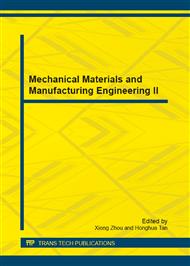p.54
p.60
p.69
p.74
p.79
p.85
p.91
p.95
p.101
A Design Methodology for Reverse Engineering Integrated with Anatomical CAD
Abstract:
In the conventional Reverse Engineering (RE), the first step is modeling industrial components from point cloud to parametric CAD model, and then the necessary design will be operated in a parametric CAD environment. Therefore the reverse engineering process is very time-consuming and error-prone. The Anatomical CAD means allowing the common Computer Aided Design operations on 3D anatomical data. 3-matic is a software package which equipped with an Anatomical Reverse Engineering module, with this module we can do the design operations on anatomical data. In this paper, we propose a new design methodology integrated with Anatomical CAD, which we can eliminate the first step of reverse engineering of the scanned data to a CAD format, save the time and work more accurately.
Info:
Periodical:
Pages:
79-84
Citation:
Online since:
December 2012
Authors:
Price:
Сopyright:
© 2013 Trans Tech Publications Ltd. All Rights Reserved
Share:
Citation:


